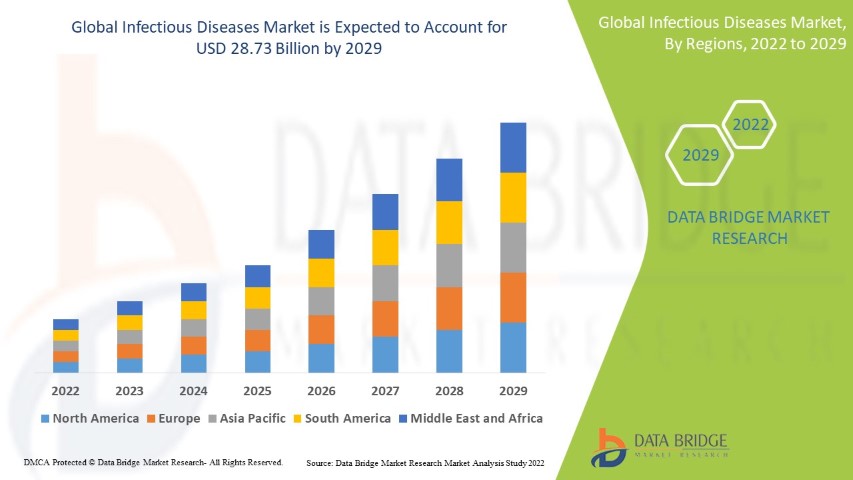Introduction
Infectious diseases remain one of the most persistent challenges to global health, affecting millions of people each year across all regions and socioeconomic levels. Caused by pathogenic microorganisms such as bacteria, viruses, fungi, or parasites, infectious diseases can spread directly or indirectly from one person to another. From historical pandemics like the Black Death to recent outbreaks like COVID-19, these diseases have shaped human history and continue to drive advancements in medicine, public health policy, and scientific research.
This guest post offers a comprehensive overview of infectious diseases—their types, causes, transmission methods, impact, treatment, global burden, prevention strategies, emerging threats, and the future of infectious disease control.
What Are Infectious Diseases?
Infectious diseases are disorders caused by organisms. While many microorganisms live in or on our bodies harmlessly or even beneficially, under certain conditions, some can cause disease.
Types of Infectious Agents
- Bacteria: Single-celled organisms; e.g., tuberculosis, cholera
- Viruses: Genetic material enclosed in a protein coat; e.g., influenza, HIV/AIDS
- Fungi: Eukaryotic organisms; e.g., candidiasis, ringworm
- Parasites: Organisms that live on or inside a host; e.g., malaria, toxoplasmosis
- Prions: Infectious proteins; e.g., Creutzfeldt-Jakob disease
Modes of Transmission
- Direct Contact: Person-to-person, sexual contact, or vertical transmission (mother to child)
- Indirect Contact: Touching contaminated surfaces
- Droplet Transmission: Coughing, sneezing, or talking
- Airborne Transmission: Pathogens carried by dust or droplets suspended in the air
- Vector-Borne Transmission: Via insects like mosquitoes or ticks
- Food and Water Contamination: Ingesting contaminated substances
Common Infectious Diseases
| Disease | Causative Agent | Transmission Mode | Region Prevalence |
|---|---|---|---|
| Influenza | Virus | Droplet/Airborne | Global |
| Malaria | Parasite | Vector-borne | Sub-Saharan Africa, Asia |
| Tuberculosis (TB) | Bacterium | Airborne | Global |
| HIV/AIDS | Virus | Sexual/Vertical/Blood | Global, high in Africa |
| Hepatitis B/C | Virus | Blood, Sexual | Asia, Africa |
| COVID-19 | Virus (SARS-CoV-2) | Airborne/Droplet | Global |
| Dengue Fever | Virus | Vector-borne | Asia, Latin America |
Global Burden of Infectious Diseases
Infectious diseases are responsible for millions of deaths each year. According to the WHO:
- Lower respiratory infections are among the top causes of death worldwide.
- Malaria causes over 600,000 deaths annually.
- TB kills 1.5 million people per year.
- HIV/AIDS remains a global epidemic with over 38 million people living with the disease.
Children, the elderly, and immunocompromised individuals are especially vulnerable. Developing countries bear the greatest burden due to limited healthcare infrastructure, poor sanitation, and inadequate access to vaccines and medicines.
Emerging and Re-emerging Infectious Diseases
Globalization, climate change, urbanization, and antimicrobial resistance have led to the emergence of new infectious diseases and the resurgence of previously controlled ones.
Notable Emerging Diseases:
- COVID-19
- Zika Virus
- Ebola Virus Disease
- MERS (Middle East Respiratory Syndrome)
- Avian Influenza (H5N1)
Contributing Factors:
- Wildlife-to-human transmission (zoonosis)
- Global travel and trade
- Deforestation and habitat disruption
- Antibiotic misuse and resistance
Diagnosis and Treatment
Diagnosis Techniques:
- Blood and urine tests
- Cultures (bacterial/fungal)
- Imaging (X-rays, CT scans)
- Molecular tests (PCR, antigen/antibody testing)
Treatment Options:
- Antibiotics (for bacterial infections)
- Antivirals (for viral infections)
- Antifungals (for fungal infections)
- Antiparasitics (for parasitic infections)
- Supportive care: hydration, oxygen therapy, symptom management
The Role of Vaccination
Vaccines are one of the most effective tools for preventing infectious diseases.
Key Vaccines:
- Measles, Mumps, Rubella (MMR)
- Polio
- Hepatitis B
- HPV
- COVID-19
- Influenza
Global immunization programs have significantly reduced the incidence of many deadly diseases. However, vaccine hesitancy and misinformation remain major obstacles.
Preventive Measures
- Hand Hygiene: Frequent hand washing with soap and water
- Sanitation and Clean Water: Access to safe drinking water and proper waste disposal
- Personal Protection: Use of masks, gloves, insect repellents
- Food Safety: Proper cooking and storage of food
- Safe Sex Practices: Condom use and regular screening
- Isolation and Quarantine: For controlling outbreaks
- Health Education: Promoting awareness and behavioral change
Role of Technology and AI
Technology is revolutionizing the field of infectious disease management:
- AI & Big Data: Predicting outbreaks, tracking disease spread
- Telemedicine: Remote consultations and early diagnosis
- Mobile Health Apps: Symptom tracking and contact tracing
- Genome Sequencing: Identifying new pathogens rapidly
- Wearable Devices: Monitoring health metrics in real time
Public Health and Policy Interventions
Global coordination is key to controlling infectious diseases:
Organizations Involved:
- World Health Organization (WHO)
- Centers for Disease Control and Prevention (CDC)
- GAVI, the Vaccine Alliance
- National Institutes of Health (NIH)
Key Initiatives:
- International Health Regulations (IHR)
- One Health Approach (integration of human, animal, and environmental health)
- Global Surveillance Systems (e.g., FluNet, ProMED)
Antimicrobial Resistance (AMR)
Antimicrobial resistance is a growing threat where pathogens become resistant to existing treatments.
Causes:
- Overuse and misuse of antibiotics
- Inadequate infection control
- Poor regulation of pharmaceuticals
Impact:
- Harder to treat infections
- Increased mortality and healthcare costs
- Threatens surgery and cancer treatments
Solutions:
- Prudent antibiotic use
- Research and development of new drugs
- Public awareness campaigns
Case Study: COVID-19 Pandemic
COVID-19 has highlighted both the vulnerabilities and strengths of global health systems. It accelerated vaccine development, showcased the power of global collaboration, and emphasized the need for better pandemic preparedness.
Lessons Learned:
- Importance of rapid diagnostics
- Necessity of robust healthcare infrastructure
- Global equity in vaccine distribution
- Investment in public health systems
Future Outlook
Infectious diseases will remain a global challenge, but innovation, education, and international cooperation can mitigate their impact.
Key Focus Areas:
- Universal access to healthcare
- Strengthening surveillance and early warning systems
- Developing next-gen vaccines and therapeutics
- Integrating climate change data in disease prediction models
Source: https://www.databridgemarketresearch.com/reports/global-infectious-diseases-market
Conclusion
Infectious diseases have shaped human civilization and continue to challenge global health. Yet, with scientific innovation, technology, and collective action, we can prevent and manage outbreaks more effectively than ever before. A future where infectious diseases are detected early, treated efficiently, and prevented entirely is within reach—provided we act globally and equitably.
In conclusion, understanding infectious diseases is not only a medical necessity but a societal responsibility. From personal hygiene to global policy, every effort counts in safeguarding our shared health and future.





